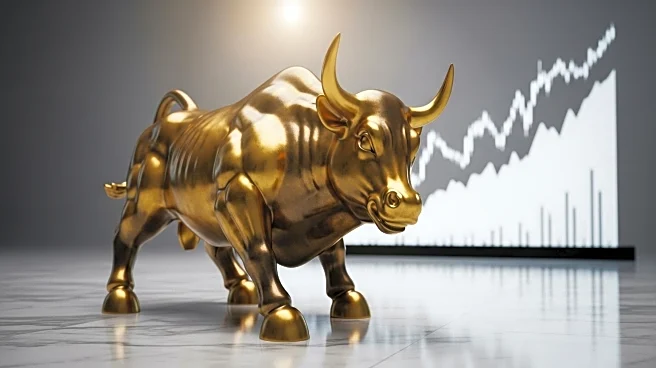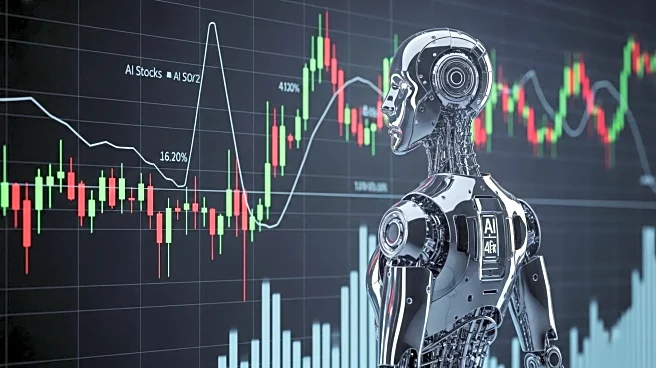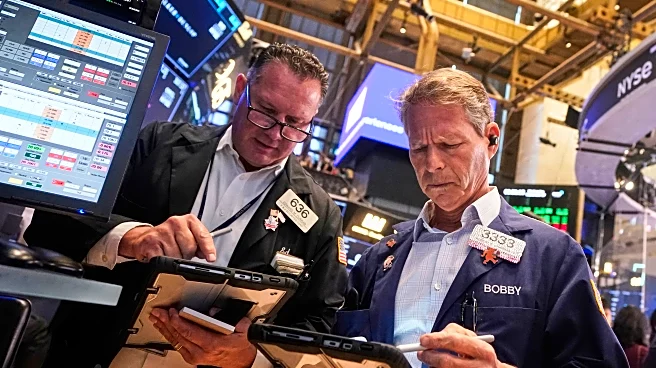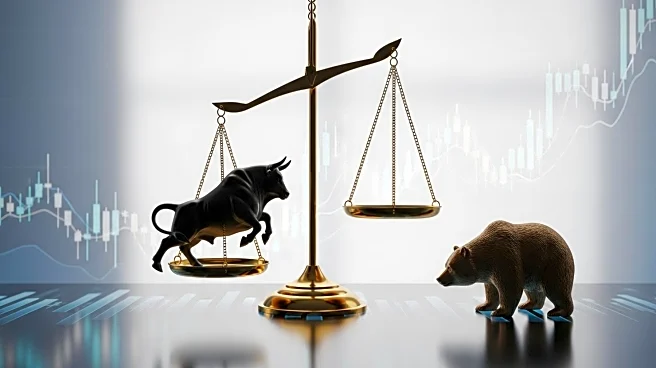What's Happening?
Jeffrey Hirsch, editor of the Stock Trader's Almanac, has expressed optimism about the stock market's performance in October, despite recent losses. The S&P 500 has reached new all-time highs in September, with gains exceeding 2%, which is notably better than the average September pullback of 4.2% over the past five years. Hirsch dismisses concerns about 'Octoberphobia,' a term used to describe significant market declines historically occurring in October, such as the crashes in 1929 and 1987. He attributes the bullish momentum to factors like artificial intelligence, Federal Reserve rate cut expectations, and persistent government spending. Hirsch also notes that October tends to perform better in post-election years, with the S&P 500 averaging a 1.3% gain since 1950, compared to a 0.9% average overall.
Why It's Important?
The potential for a strong October performance in the stock market is significant for investors and economic stakeholders. A continued rally could bolster investor confidence and drive further investment into equities, particularly in sectors benefiting from AI and government spending. The anticipation of Federal Reserve rate cuts could also influence market dynamics, affecting interest rates and borrowing costs. Additionally, alleviating concerns about a government shutdown could stabilize market sentiment, reducing volatility. The broader economic implications include potential impacts on consumer spending, corporate earnings, and overall economic growth, as a robust stock market often correlates with positive economic indicators.
What's Next?
Hirsch predicts a 'monster Q4 rally,' with a year-end price target for the S&P 500 of 7,100, suggesting more than 7% upside. Investors and analysts will closely monitor upcoming economic data, Federal Reserve announcements, and government fiscal policies to gauge their impact on market trends. The resolution of government shutdown concerns could further influence market stability. Stakeholders will also watch for developments in AI and technology sectors, which are expected to drive significant trading activity. The interplay between these factors will shape market expectations and investment strategies heading into the final quarter of the year.
Beyond the Headlines
The optimism surrounding the stock market's performance in October highlights the complex interplay of economic indicators, investor sentiment, and policy decisions. The reliance on AI and government spending as catalysts for market growth underscores the evolving nature of economic drivers in the digital age. Additionally, the historical context of 'Octoberphobia' serves as a reminder of the cyclical nature of market trends and the importance of understanding historical patterns in forecasting future performance. The potential for a strong rally also raises questions about market sustainability and the long-term implications of high valuations and speculative trading.











